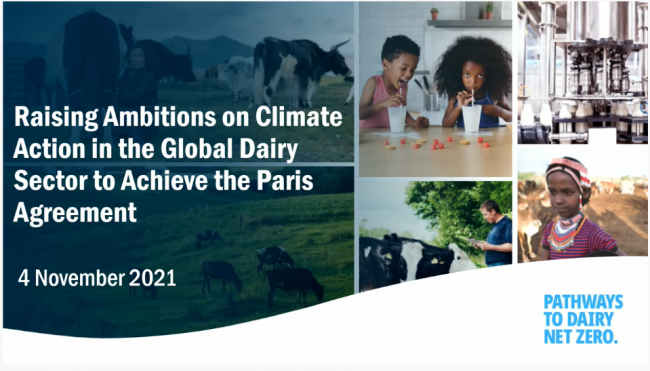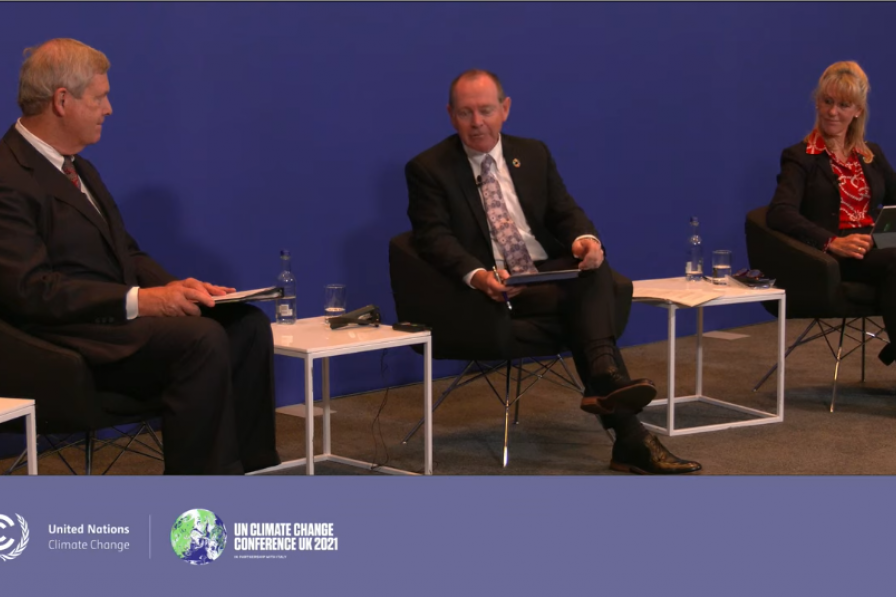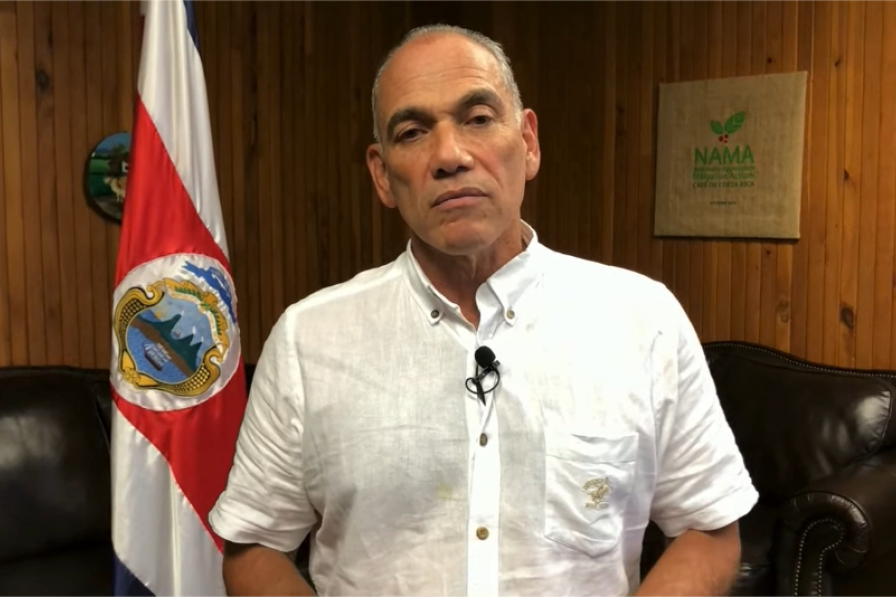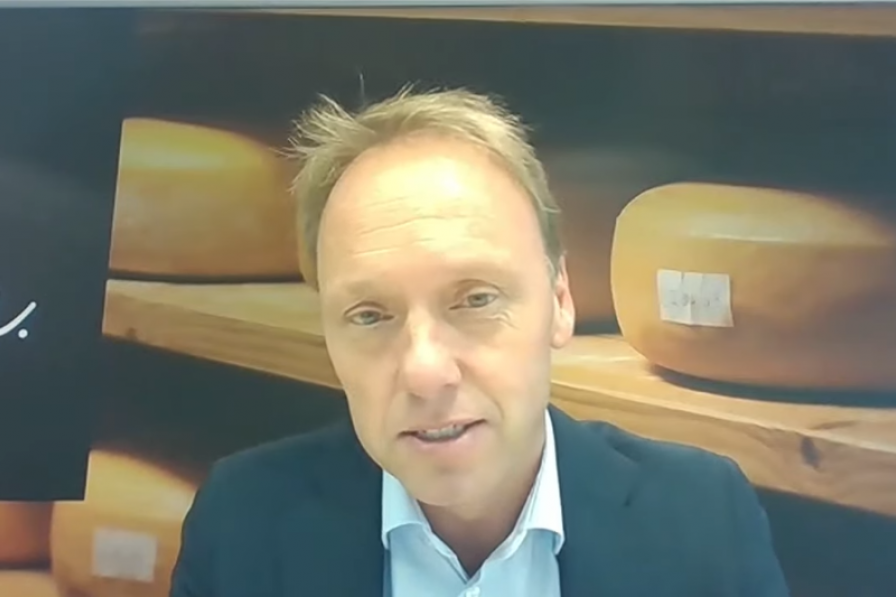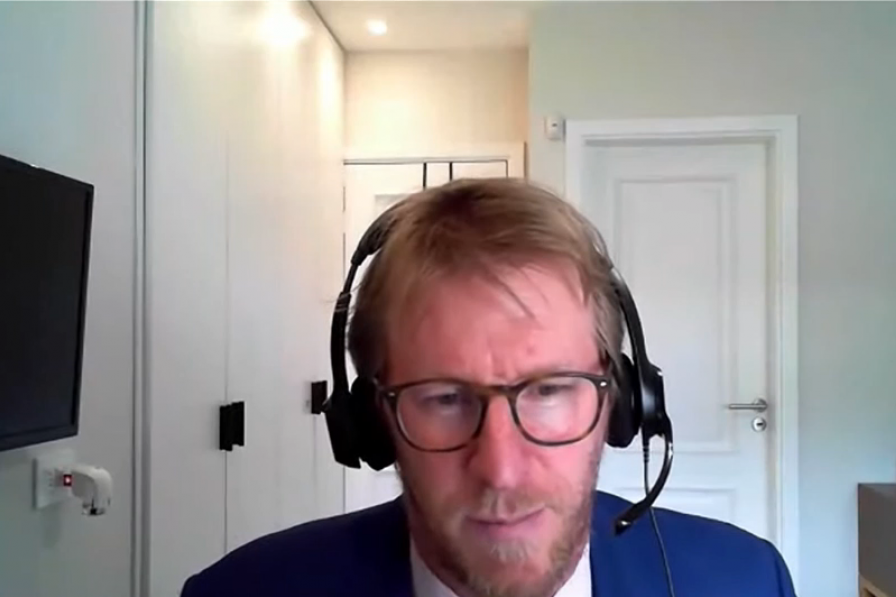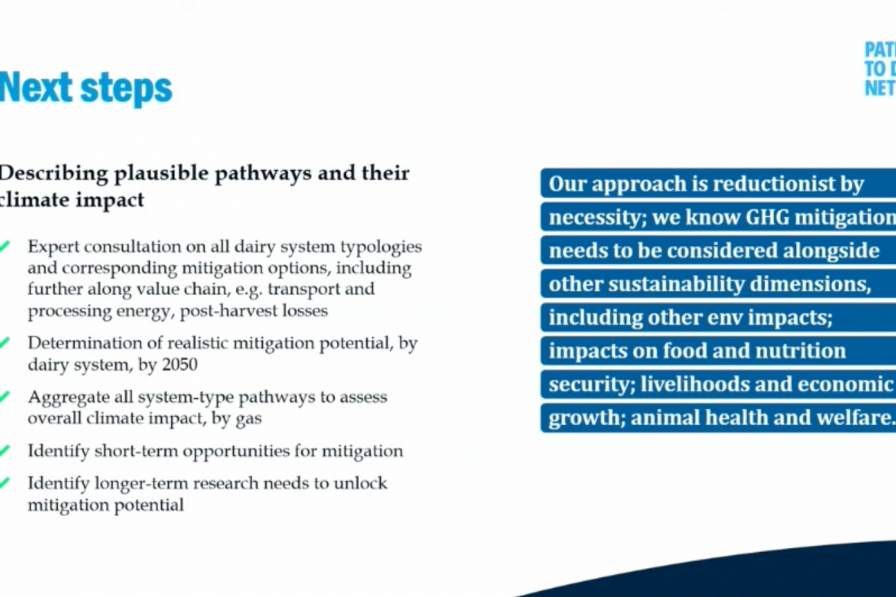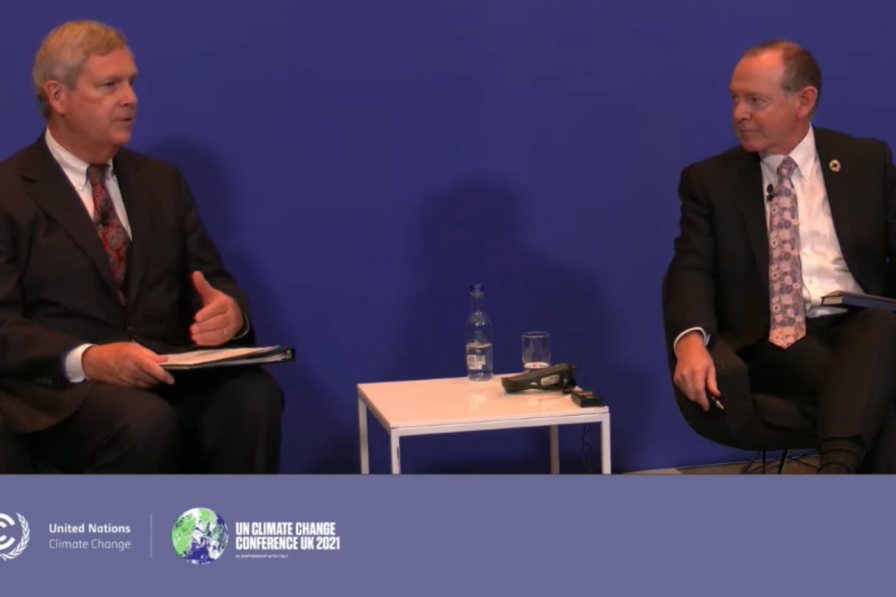Raising Ambitions on Climate Action in the Global Dairy Sector to Achieve the Paris Agreement
Dairy farmers care for approximately 20% of the Earth’s land surface, but their industry produces a significant amount of the world’s greenhouse gas (GHG) emissions. How can they reduce emissions while continuing to provide food and ensuring their own livelihoods? This event, organized by the Food and Agriculture Organization of the UN (FAO), introduced the Pathways to Dairy Net Zero initiative, an international public-private alliance to reduce GHG emissions in the global dairy sector. It brought together panelists from governments, research institutions, and the private sector to discuss the ways in which the dairy sector can achieve net zero emissions and contribute to GHG mitigation. Vikki Tam, Bain & Company, moderated the discussion.
Welcoming participants, Fernando Mattos, Minister of Livestock, Agriculture and Fisheries, Uruguay, highlighted his country’s commitment to building sustainable production capacities and mitigating GHG emissions within its dairy industry. He noted his country’s participation in recently announced global pledges to end deforestation by 2030 and to reduce methane emissions by 30% by 2030.
Panel Discussion
Donald Moore, Executive Director, Global Dairy Platform, underlined that sustainability must be understood from environmental, social, and economic perspectives. He explained that the Pathways to Dairy Net Zero initiative commits to addressing climate change while honoring the Sustainable Development Goals (SDGs), developing pathways which encompass the breadth and diversity of the global dairy industry. He noted the need for both large and small companies and producers to join the initiative, highlighting that these pathways must include farmers across scales
Hayden Montgomery, Global Research Alliance on Agricultural Greenhouse Gases (GRA), presented his organization’s role in the Pathways to Dairy Net Zero initiative as a knowledge partner. He said the GRA aims to model scenarios to demonstrate plausible mitigation pathways for different dairy systems by 2050. He explained that: the various dairy system types, ranging from highly industrial to subsistence farming, have different efficiencies related to emissions per milk yield; and sources of emissions, such as enteric fermentation and manure management, shift in importance depending on the type of production.
Stressing that over a billion people worldwide rely on the dairy sector in some form, Hein Schumacher, Royal FrieslandCampina, presented a video compilation of international dairy industry executives discussing the efforts of their individual companies to mitigate emissions. The video also discussed the need for sustainable development in the industry through “strong actions” which reduce emissions, increase biodiversity, educate farmers, and preserve animal welfare.
Tom Vilsack, Secretary of Agriculture, United States, argued that getting to net zero in the dairy industry requires investment in transformative practices and methods which are centered on farms of all sizes. He highlighted: the US Department of Agriculture’s investments in “climate-smart” agriculture and forestry; the need for regenerative agriculture practices such as building soil health and planting cover crops; and his country’s work to build infrastructure for renewable energy generation on farms. He also encouraged participants to join the Agriculture Innovation Mission for Climate, an initiative co-sponsored by the United States and the United Arab Emirates.
Highlighting that pastoral production can help mitigate emissions in the right circumstances, Renato Alvarado Rivera, Minister of Agriculture and Livestock, Costa Rica, recounted his country’s work to: integrate more trees into pastoral production; replace the use of corn- and soy-based animal feed with forage; and leverage sustainable production methods for farmers.
Qu Dongyu, Director-General, FAO, highlighted the potential for dairy systems and animal production to contribute to GHG mitigation and carbon sequestration. He noted FAO’s support of the Pathways to Dairy Net Zero initiative through: providing data and modeling; aiding in analysis for decision making; risk analysis; providing platforms for calculating emissions metrics; and helping to develop policies, strategies, and measures.
Minette Batters, World Farmers’ Organisation, said all farmers must “get on the net zero ladder” and welcomed the work of the Pathways to Dairy Net Zero initiative. She spoke about her work as president of the UK National Farmers Union in developing a target for agriculture to be a net-zero sector by 2040, ten years ahead of the nationally legislated net zero target. She argued that achieving net zero must be done through partnerships among industry, government, and academia.
During the subsequent question-and-answer session, participants discussed, among others: the need for the dairy and livestock industries to tackle methane emissions, especially in light of the global pledge to reduce methane emissions; and the importance of innovation and scientific research in achieving net zero emissions in the dairy sector. Moore concluded the event by noting that dairy, like all commodities, has a strong impact on the environment, and that the Pathways to Dairy Net Zero initiative symbolizes the industry’s commitment to address its impacts.
CONTACT
Timothy Robinson | timothy.robinson@fao.org
Claudia Ciarlantini | claudia.ciarlantini@fao.or
Emmie Wachira | emmie.wachira@fao.org
MORE INFORMATION
To receive free coverage of global environmental events delivered to your inbox, subscribe to the ENB Update newsletter.

